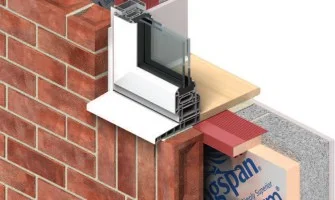
Image Source: Google
As the construction industry continues to evolve, there is a growing focus on energy efficiency and sustainability. One innovative solution that is gaining popularity in modern construction is the use of cavity closers. Cavity closers are a vital component in creating energy-efficient buildings by helping to reduce heat loss and improve insulation.
In this article, we will explore the benefits of cavity closers and why they are crucial for achieving optimal energy efficiency in construction projects. You can also click on this link if you need more information about the best cavity wall closers.
What are Cavity Closers?
Cavity closers are materials that are used to fill the gaps around doors and windows in a building's external walls. These gaps, known as cavities, can lead to heat loss and draughts if not properly sealed. Cavity closers are typically made from insulating materials such as rigid foam or mineral wool and are designed to fit snugly into the cavities to prevent air leakage.
Benefits of Cavity Closers
- Improved Insulation: Cavity closers help to enhance the thermal performance of a building by reducing heat loss through doors and windows.
- Energy Efficiency: By creating a tight seal around openings, cavity closers help to lower energy consumption for heating and cooling.
- Condensation Control: Cavity closers can also help to prevent condensation build-up, which can lead to dampness and mold growth.
- Noise Reduction: In addition to thermal benefits, cavity closers can also improve sound insulation by reducing noise transmission through doors and windows.
- Easy Installation: Cavity closers are easy to install and can be fitted during the construction process, making them a cost-effective solution for improving energy efficiency.
Types of Cavity Closers
There are several types of cavity closers available, each designed for specific applications and building requirements. Some common types of cavity closers include:
1. Rigid Foam Cavity Closers
Rigid foam cavity closers are made from materials such as expanded polystyrene (EPS) or extruded polystyrene (XPS) and offer excellent thermal insulation properties.
2. Mineral Wool Cavity Closers
Mineral wool cavity closers are made from mineral fibers and provide good thermal and acoustic insulation while also being fire-resistant.
3. Damp-Proof Cavity Closers
Damp-proof cavity closers are designed to prevent moisture from entering the building and can help to reduce the risk of damp problems.
Applications of Cavity Closers
Cavity closers are commonly used in various parts of a building where doors and windows are installed. Some common applications of cavity closers include:
1. Window Openings
Cavity closers are installed around window openings to provide insulation and prevent air leaks.
2. Door Frames
Cavity closers are also used around door frames to ensure a tight seal and improve energy efficiency.
3. Extension Joints
Cavity closers can be used in extension joints to provide continuity of insulation and prevent thermal bridging.
Conclusion
Cavity closers play a crucial role in enhancing the energy efficiency and sustainability of modern buildings. By providing insulation, preventing air leakage, and improving thermal performance, cavity closers help to create a more comfortable indoor environment while reducing energy costs. As the construction industry continues to prioritize energy efficiency, cavity closers are set to become an essential component in the design and construction of buildings. Consider incorporating cavity closers into your construction projects to reap the benefits of improved insulation and energy savings.